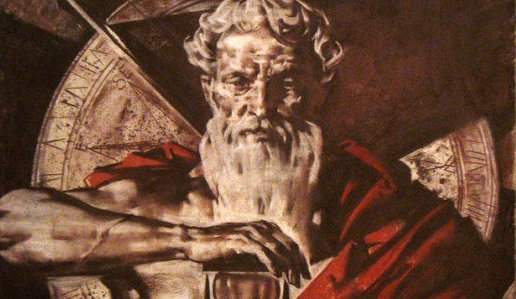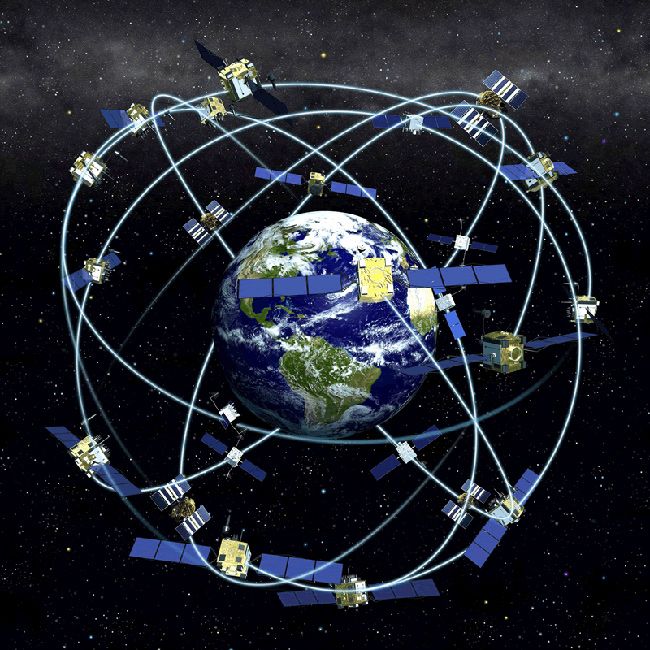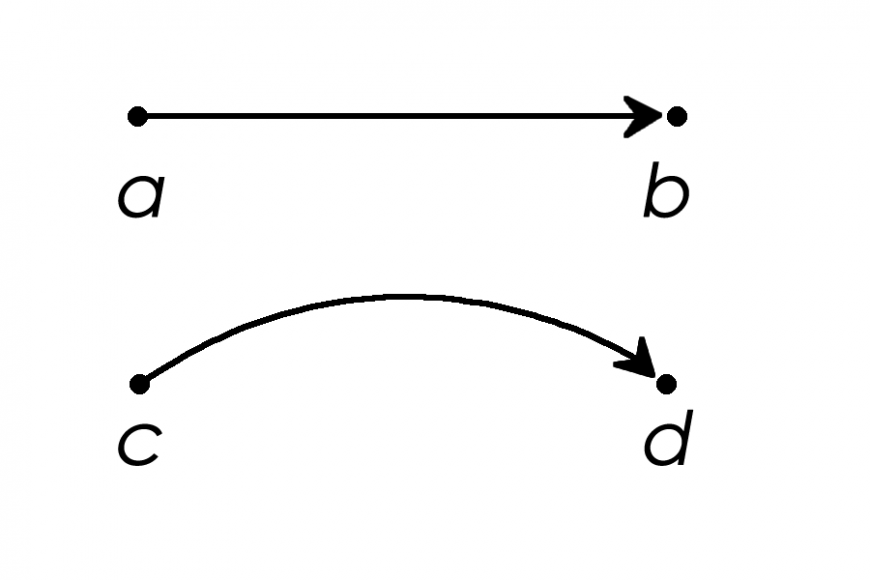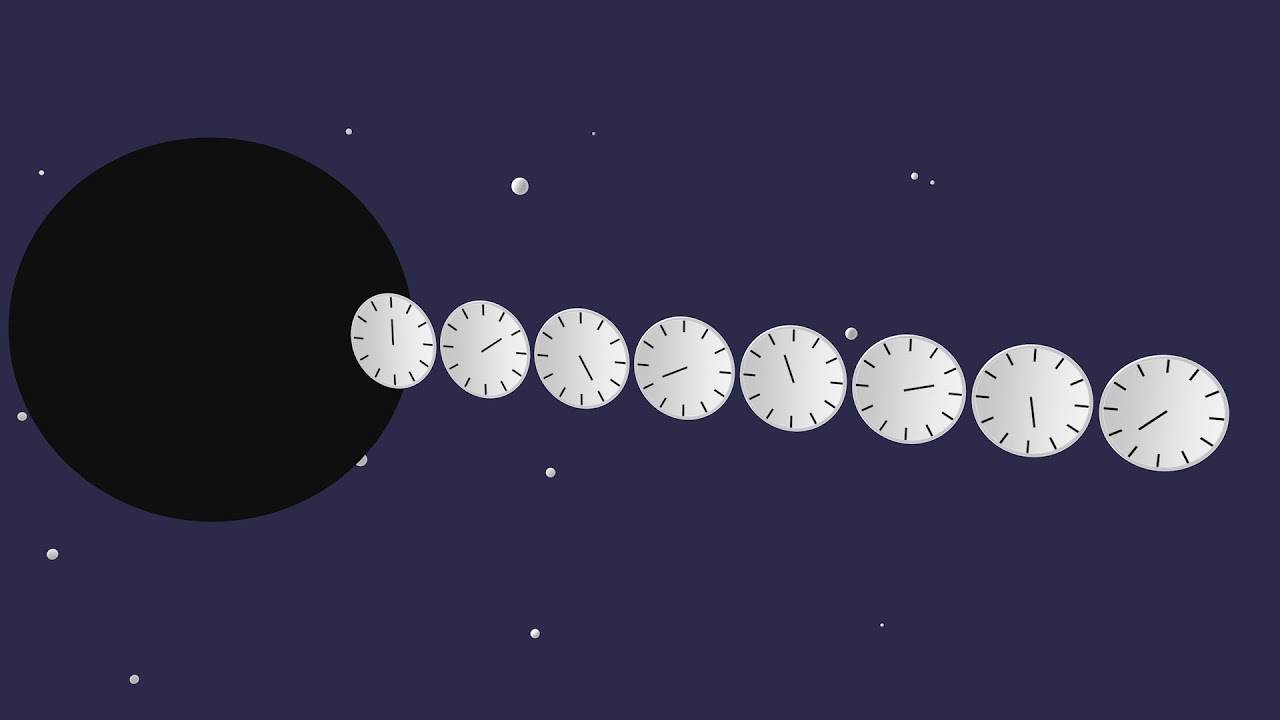
Chronos: God of Time
It is the mythological Universe's most troublesome heterograph: Cronos, the Titan who sired the gods, and Chronos, the god of time who, according to Orphic tradition, preceded Chaos, the unbounded nothing that predated the Universe. Although they were entirely different in character, appearance and time frame, these two old fellows have often been fused into a single personification merely because their names sound exactly alike, even though the spellings differ by a single letter. Consequently, the Titan Cronos is often depicted wielding a scythe, the implement most closely associated with Death Reapers who employ this device to level all life forms. In fact, Cronos only possessed a sickle of adamant, with which he castrated his father Ouranos in order to liberate his siblings imprisoned in Gaia's womb. The actual scythe holder was the venerable Chronos who arose from Earth and water to sire Aether, Chaos and a Primordial Egg. The personification of the loftiest sky regions, Aether became the rarefied air that only the gods could breathe. Such was the potency of this air that it quickly overwhelmed any mortal who tried to inhale it. (In some cases, it induced such an intense ecstasy into mortals that they soon fainted from the sensation before bursting into flame.) Chaos, as we have seen, was the nothing from which the cosmos took form. The Primordial Egg produced the hermaphroditic Phanes who became the progenitor of all living beings. So, Gaia and Ouranos emerged from Phanes, as opposed to Chaos.
Like most of the truly ancient deities, Chronos hardly ever became involved in the lives of those he engendered. Instead, Chronos was an ageless deity who devoted himself to turning the vast "zodiac wheel." This wheel contained the twelve constellations through which the Sun annually progressed. This one task might seem to have been light work for Chronos, considering that nothing can occur in the Universe without time . However, Chronos relinquished his control over most aspects of his dominion to the "younger" generation. Thanatos presided over death; Eileithyia was the goddess of childbirth and labor pains; Demeter governed the harvest; Hebe was the goddess of youth; Geras was the god of old age; the moon phases fell under Artemis' domain; Apollo guided the Sun; and Astraeus controlled the stars and planets. Instead of shouldering these burdens himself, Chronos delegated them to others and as a consequence the mythological Universe became brilliantly well ordered.
Though often portrayed as an elderly man with a luxuriant mane and beard of white hair, he is also seen as a combination of a man, a lion and a bull. His daughter Ananke, a snake, was also said to have revolved around him and the primordial egg before it hatched out Phanes and then ultmately every living, breathing entity that populated Olympus and the world.
THE SOUTHWORTH PLANETARIUM
207-780-4249 www.usm.maine.edu/planet
70 Falmouth Street Portland, Maine 04103
43.6667° N 70.2667° W
Altitude: 10 feet below sea level
Founded January 1970
Julian Date: 24591130.16
2020-2021: XXVII
THE DAILY ASTRONOMER
Thursday, October 8, 2020
Thursday, October 8, 2020
Remote Planetarium 105: General Relativity II - Gravitational Time Dilation
That gravity affects time is one of General Relativity's most startling consequences. The time flow in a region close to a massive body differs from that farther away from it. For instance, regard two atomic clocks, one located in Greenwich, England (sea level) and the other, NIST-F1, in Boulder, CO (5,238 feet above sea level). Based on atomic transitions, these two clocks serve as highly precise time keepers that are so accurate they have an expected error of about one second over 100 million years.* As these clocks occupy different altitudes, they differ slightly in their time keeping. The atomic clocks in Greenwich run 5 microseconds a year more slowly than the Boulder unit, which is farther away from Earth. This difference is a practical example of gravitational time dilation, the time dilation resulting from the presence of massive objects.

Want to live longer? Climb a ladder. Provided you remain at the ladder's top, you will gain 90 billionths of a second over a 70 year period.

GPS (Global positioning system) satellites must be calibrated to take gravitational time dilation into account. As these satellites revolve around Earth at an approximate altitude of 12,550 miles (medium Earth orbit), their on-board clocks run about 35 microseconds a day faster than clocks on Earth's surface.
Time runs more slowly around a gravitational body than it does away from it.
To explain why gravity influences time, we must return to the Special Relativity's fundamental postulate: the speed of light is constant in all inertial reference frames.
A light beam travels from one point to the other at a constant speed. However, as we learned yesterday, a massive object distorts its local space-time geometry. The amount of material present (and its density) determines the extent of this deformation. Regard two sets of points: a to b and c to d.
Points a and b, being far away from a massive body, are separated by a perfectly straight line. Points c and d are located within a field of higher gravitational potential (near a massive body). These points are separated by a curved line resulting from the space-time deformation. The path separating a and b is shorter than that between c and d. The light follows a longer path between c and d in a stronger gravitational field while maintaining the same rate of speed. As a consequence, time dilates, or runs more slowly, in the gravitational field.

The amount of material present determines the extent of this dilation. To cite an extreme example, let's examine the region around a stellar mass black hole, a region of space where the gravitational pull is so strong that nothing can escape from it, not even light. (Recall that black holes form after the collapse of a highly massive star.)

Imagine that you and a friend are stationed along a platform well outside the black hole's Event Horizon, the surface boundary surrounding the black hole that marks the region from which light cannot escape. Your friend decides to travel toward the hole while you remain safely on the platform watching his progress toward it. At first you don't notice anything amiss. He progresses smoothly and rapidly troward his doom. However, as he approaches the event horizon, his progress slows more and more as he draws closer. Then, astonishingly, he "freezes." You watch him just float there outside the black hole and never appears to enter it.** Even though time doesn't stop for him, from your perspective he is suspended there forever.
From GPS satellites to atomic clocks to Black Holes, we find examples of gravitational time dilation throughout the Universe. Another remarkable aspect of physical reality.
On Monday, we'll learn more about space-time curvature, including the now-famous Eddington expedition in 1919 that provided the first direct evidence supporting the theory that matter curves space.
*Quantum logic clocks and optical clocks have now been developed with accuracies of one second for every one billion years.
**We are ignoring the powerful differential gravitational effects that would literally rip your friend into his component subatomic particles long before he reached the event horizon.
To subscribe or unsubscribe from the Daily Astronomer: